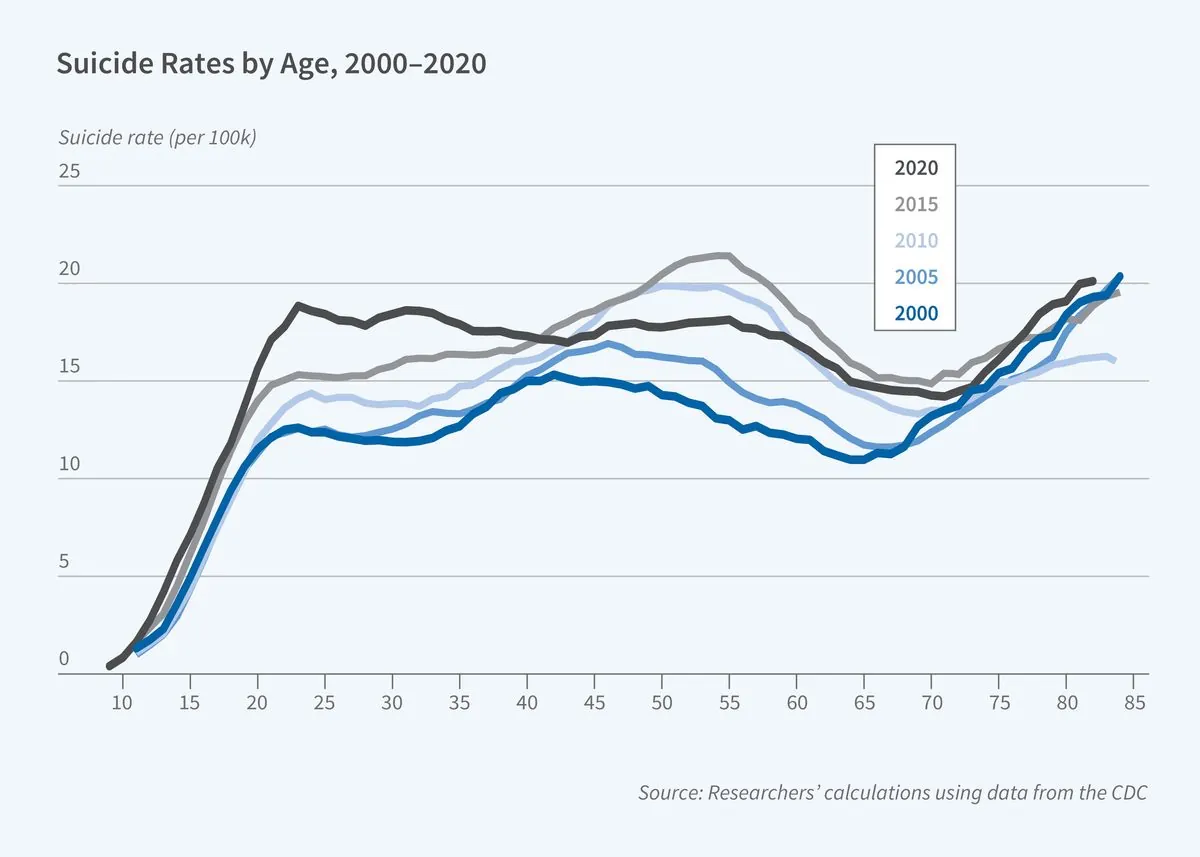U.S. Suicide Rates Remain at Historic Highs, CDC Data Reveals
Preliminary CDC data shows U.S. suicide rates in 2023 matched 2022's high levels. Despite prevention efforts, the rate remains at a peak not seen since 1941, with complex factors contributing to the trend.

Recent data from the Centers for Disease Control and Prevention (CDC) indicates that U.S. suicide rates in 2023 remained at historically elevated levels. Provisional figures suggest approximately 49,300 suicide deaths occurred last year, a number that may increase slightly as ongoing investigations conclude.
This figure closely aligns with the 49,500 suicide deaths reported in 2022, resulting in an identical suicide rate for both years. The consistency in these numbers marks a continuation of a concerning trend that has persisted for nearly two decades.
Katherine Keyes, a public health professor at Columbia University, cautiously notes that a stabilization in suicide rates could be seen as potentially promising news. However, she emphasizes that it's too early to determine if this represents a meaningful shift in the long-term trend.

The current suicide rate of 14.2 per 100,000 people matches the level observed in 2018, which hadn't been seen since 1941. This statistic underscores the severity of the issue, as suicide remains the 11th leading cause of death in the United States.
Experts highlight several factors contributing to suicide rates, including increased prevalence of depression, limited access to mental health services, and the availability of firearms. In 2022, approximately 55% of suicide deaths involved firearms, according to CDC data.
The demographic breakdown of suicide rates reveals significant disparities:
- Suicide is the second leading cause of death for individuals aged 10-14 and 20-34.
- Men, particularly those 75 and older, have the highest suicide rate at about 44 per 100,000.
- Among women, the highest rate is observed in middle-aged individuals, at about 9 per 100,000.
- Alarmingly, suicide rates among teens and young women have doubled over the past two decades.
"If you or someone you know needs help, the national suicide and crisis lifeline in the U.S. is available by calling or texting 988."
It's crucial to note that suicide is a complex issue influenced by various factors. The World Health Organization estimates that approximately 800,000 people die by suicide globally each year, highlighting the global scale of this public health concern.
Efforts to address this crisis include the implementation of a national crisis line in the U.S. two years ago, allowing anyone to dial 988 to reach mental health specialists. Additionally, research has shown that the introduction of safety barriers on bridges and high buildings can effectively reduce suicide rates.
The impact of suicide extends beyond individual tragedies. For instance, the suicide rate among U.S. veterans is 1.5 times higher than the general population, emphasizing the need for targeted interventions for vulnerable groups.
As we confront this ongoing challenge, it's important to recognize that suicide prevention efforts are evolving. The development of social media has led to new forms of suicide prevention, including online support groups and crisis intervention platforms. These innovative approaches, combined with traditional methods, may play a crucial role in addressing this critical public health issue in the years to come.


































